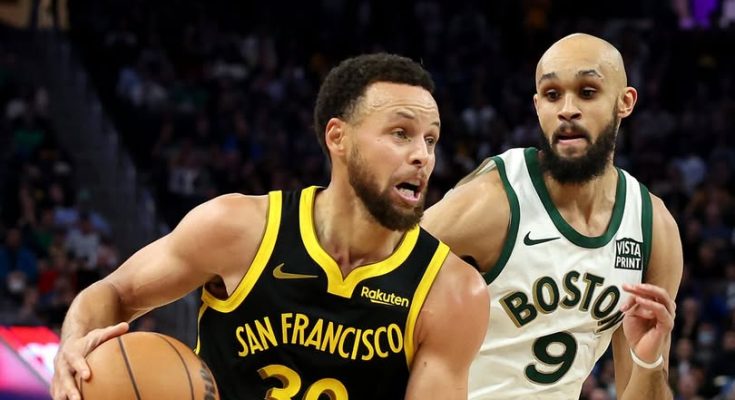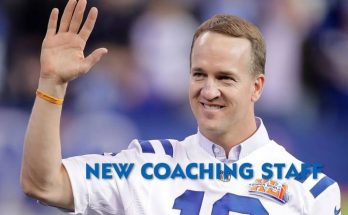The Golden State Warriors find themselves in unfamiliar territory as the 2025 NBA offseason ramps up. Long considered the league’s dynasty of the modern era, their grip on dominance has loosened considerably over the past two seasons. With the aging of core stars like Stephen Curry, Klay Thompson, and Draymond Green, and the departure of key support players, the team’s once seamless blend of youthful exuberance and veteran leadership has started to unravel. In response, the Warriors’ front office is reportedly eyeing a high-level roster change—most notably, the acquisition of Boston Celtics guard Derrick White—as part of a calculated effort to reignite their championship window. This potential move has ignited significant buzz within league circles, not only because of White’s current stature as an elite two-way guard but also because of what it might signal about Golden State’s broader strategic vision moving forward.
Derrick White’s meteoric rise over the last few years is a case study in player development and system optimization. Once considered a solid role player during his stint with the San Antonio Spurs, White found a new gear after being traded to Boston. His game matured under the Celtics’ system, particularly thriving under head coach Joe Mazzulla’s defensive schemes and motion-heavy offense. In the 2024-25 season, White emerged as one of the league’s premier perimeter defenders, a capable secondary playmaker, and a deadeye shooter from beyond the arc. His ability to guard multiple positions, switch on the perimeter, and maintain high defensive IQ made him indispensable to the Celtics’ NBA Finals run. White’s value in Boston skyrocketed after multiple clutch performances, including game-saving blocks, game-winning threes, and consistent defensive presence on the league’s most dynamic guards.
From Golden State’s perspective, acquiring White serves multiple purposes. First and foremost, it injects energy, youth, and defensive prowess into a backcourt that has struggled to defend elite guards consistently. While Curry remains a potent offensive force, his defensive limitations are becoming more apparent as he gets older. Klay Thompson, who once was considered one of the best two-way guards in basketball, has not returned to peak form since his back-to-back ACL and Achilles injuries. And with Chris Paul no longer part of the team after a short-lived tenure, the need for a reliable, switchable, two-way guard who can alleviate Curry’s on-ball burden is more crucial than ever.
White’s potential addition would also bring versatility on both ends of the floor. On offense, he can serve as both a primary ball-handler in second units and a secondary initiator alongside Curry in the starting lineup. His unselfishness and basketball IQ make him an ideal fit in Steve Kerr’s motion offense, which emphasizes quick ball movement, off-ball screens, and high-tempo decision-making. Defensively, he would be able to switch across multiple positions and form a formidable backcourt tandem with Curry, providing the kind of lockdown coverage that Golden State hasn’t consistently enjoyed since their championship years. White’s presence could also reduce Curry’s defensive load, allowing the two-time MVP to preserve his energy for late-game offensive exploits.
The most intriguing part of this rumor, however, lies in what the Warriors would potentially have to give up to acquire White. The Celtics are not in a position where they need to trade him. In fact, Boston’s front office and coaching staff view him as a cornerstone piece of their current title-contending core, alongside Jayson Tatum, Jaylen Brown, and Kristaps Porzingis. Any serious offer from Golden State would likely have to involve significant assets—perhaps young players like Jonathan Kuminga or Moses Moody, draft capital, or even contractual matches involving Andrew Wiggins. The Celtics, fresh off a dominant season, would be hesitant to alter the chemistry that got them to the mountaintop unless the return clearly strengthens their rotation or secures them future financial flexibility.
This brings us to the economic implications of such a move. The NBA’s new collective bargaining agreement (CBA) has made roster construction far more challenging for teams with top-heavy payrolls. Golden State has historically not shied away from paying the luxury tax—team owner Joe Lacob has repeatedly emphasized his commitment to winning over cutting costs—but the new penalties for second apron teams are more restrictive than ever. Under the new CBA, exceeding the second apron can limit a team’s flexibility in trades, sign-and-trades, and access to exceptions. Bringing in Derrick White, who is due for a sizable extension or new contract in the near future, would require a careful balancing act to avoid future financial strangulation.
Still, it appears the Warriors may be willing to push their chips to the middle of the table one more time. Curry, now in the twilight of his career, remains one of the most efficient and dangerous offensive players in the league. The front office’s goal is to build a roster that can give him the best chance to contend before he retires. White represents a unique combination of immediate impact and long-term value. Unlike some short-term veteran rentals, he is still in his prime and could be part of the next chapter of Warriors basketball even after the current core phases out. That type of foresight matters in today’s NBA, where managing aging stars and cultivating the next wave of talent is a delicate balancing act.
It’s also worth noting that White’s personality and playing style seem to align well with Golden State’s locker room culture. A selfless player who plays hard on every possession, communicates well on defense, and embraces his role without ego, White has earned the respect of teammates and opponents alike. Golden State, known for cultivating a high-character locker room under Kerr’s leadership, would likely value these intangibles just as much as his on-court production. Chemistry cannot be overstated, especially for a team that is trying to blend experience with youth and is coming off two years of internal tension and inconsistent performance.
There are historical parallels that make this potential trade even more compelling. When the Warriors traded for Andre Iguodala back in 2013, few predicted he would become the Finals MVP in 2015 and a central piece of their defensive identity. Similarly, when they signed Shaun Livingston, critics questioned the fit until he became a key member of their second unit and late-game lineups. White, like those players, might not be a headline-grabbing superstar, but he could very well be the connective tissue that turns a talented but flawed team into a cohesive title threat once more.
The move also signals a potential philosophical shift. For years, Golden State has been attempting the difficult “two-timeline” approach—developing young talent while competing for titles. Players like James Wiseman, Kuminga, and Moody were viewed as future centerpieces while Curry and company chased rings. That experiment produced mixed results, with Wiseman already gone and Moody still fighting for consistency. If the Warriors move forward with a deal for White that involves some of these young assets, it could indicate a move away from that dual timeline vision toward a more singular, Curry-centric strategy—one last ride with a fully optimized roster.
From Boston’s side, entertaining an offer for White would require a perfect storm. The Celtics just locked down their core, with Tatum signing a historic supermax and Brown already inked to one. They are not desperate for cap relief or talent replacement. However, if the Warriors offered a package that included a top-tier young prospect like Kuminga, draft compensation, and cap-friendly contracts, the Celtics might consider making a move that secures their long-term flexibility while banking on the continued rise of Jrue Holiday and the development of emerging guards like Payton Pritchard.
There’s also a human side to this discussion. White has found a home in Boston, playing the best basketball of his career and becoming a fan favorite. Trading him would not only be a basketball decision—it would be a cultural one. Brad Stevens and the Celtics’ front office would need to weigh the intangible costs of parting with a glue guy who has consistently elevated their floor and ceiling alike.
As for the Warriors, pulling off such a trade would be a statement. It would show the rest of the league that they are not ready to fade quietly into the background of NBA history. It would signal to Curry that the franchise is all-in on maximizing whatever years he has left at the top of his game. It would also send a message to fans and media alike that Golden State remains aggressive, adaptive, and unafraid to make bold decisions in pursuit of greatness.
The truth is, the Warriors cannot afford to be passive this offseason. The Western Conference is a minefield of emerging superstars, well-coached squads, and deep rosters. Denver remains a powerhouse. Dallas, led by Luka Dončić, is only getting better. The Thunder are young and dangerous. And the Lakers, despite their own internal drama, still have LeBron James and Anthony Davis. To compete, Golden State must not only keep up—they must evolve. Adding Derrick White might not be the flashy move some fans are hoping for, but it could be the surgical tweak that recalibrates their trajectory.
In the end, whether or not this deal materializes will depend on a confluence of factors: trade logistics, cap management, player willingness, and timing. But even the existence of this report reveals how serious the Warriors are about reshaping their backcourt and how much they value what Derrick White could bring to the table. If they manage to pull it off, it may very well become the defining move of their post-dynasty rebuild—or the beginning of a surprising second act.
And in today’s NBA, where legacy, loyalty, and winning often collide in complex and unexpected ways, that kind of boldness might be exactly what the Warriors need to reassert themselves as contenders once again.



